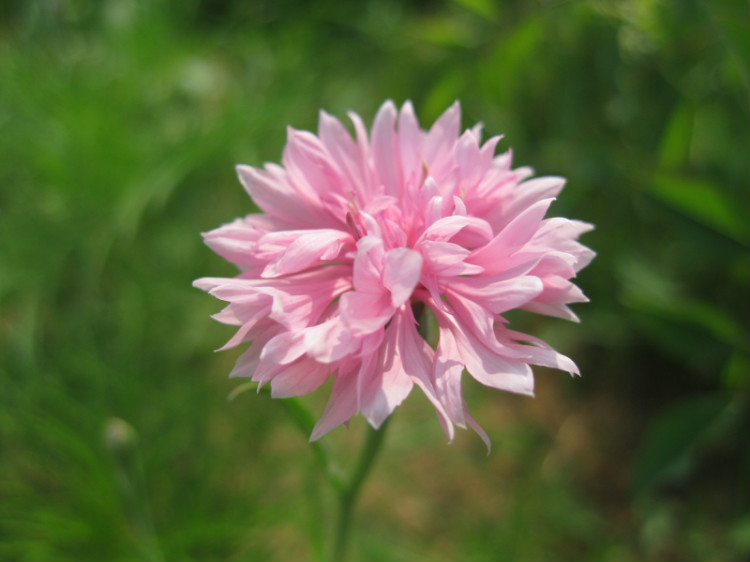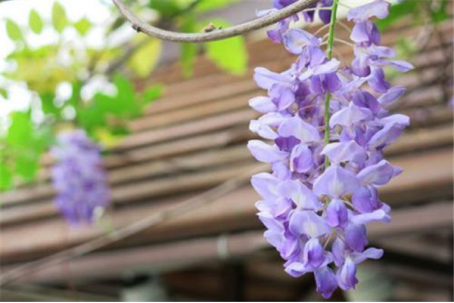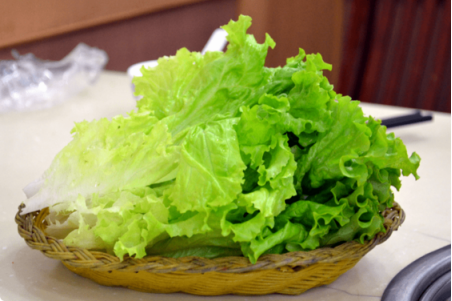How to plant cornflower seeds?
Cultivation outline
It can be planted in spring and autumn, and autumn sowing is better. The seeds were sown in the seedbed in the middle and late September, and the soil was covered with. Do not see the seed as the standard, compaction, not too hard. Cover grass, watering, always make the soil moist, sprouting to remove turf. When the seedlings have about 6 leaflets, they can be transplanted or planted, the distance between the plants is about 30 cm, apply 5 times water to mature human feces and urine every 10 days or half a month after survival, and stop fertilizing and wait for flowering in March of the following year. If it is a potted plant, the potted soil needs to be loose and fertile, and try to mix with rotten leaves, plant ash and so on.

Raising seedlings:
Methods as above, note that after the seedlings survive after planting, picking the heart once is conducive to more branches and promote flowering. If there are too many branches, part of the lateral buds should be removed in order to grow larger flowers. Because of the taproot nature, it is best to cover the winter with direct sowing in autumn and blossom in early summer. If the cold bed overwinters can blossom at the end of spring, spring sowing should be sown as soon as possible. It blossoms in June.
Cultivation place:
Cornflower comes from European fields, so it is slightly cold-resistant and likes cool and sunny places.
Use soil:
Try to use loose and fertile sandy loam with good drainage.
Watering:
Once a day is enough, but in summer drought, it is also necessary to irrigate the potted soil once in the morning and evening to ensure that the potted soil is moist, and it can also reduce the temperature of potted plants, but it is not suitable for stagnant water.
Fertilization:
The cornflower is suitable for fertilizer, and the three-element diluent should be applied once a month during the growth period. If there are too many leaves, the proportion of nitrogen fertilizer should be reduced, and more phosphorus and potassium fertilizer should be applied before flowering to produce large and gorgeous flowers.
Flowering management: the cornflower can grow lateral branches on its own, with many lateral branches and small flowers. when it reaches a certain amount, it will remove some lateral buds and retain smaller branches in order to grow large flowers. Cornflower is a kind of long-day plant, which has a short sunshine time in winter. if plant lamps are used to supplement lighting at night, it is beneficial to blossom earlier.
Cornflower seed
Cornflower is a kind of herb of Compositae, the stem is straight, the whole is white, branching from the middle section, the leaves grow into lanceolate, the basal leaves are generally pinnately lobed, the stems and leaves are not thin spider silk hair, the lower part is thin velvet. The top inflorescence is panicle or corymbose, the flowers are blue, light red, white, lavender and so on, purple and blue are more expensive, will send out a faint fragrance. This plant is mainly abundant in Europe, especially in the German countryside. It can be seen everywhere and is regarded as the national flower.
Cornflower seeds are generally sown in spring and autumn, of which autumn is the best, probably from mid-August to mid-late September. When planting, sow the seeds in the seedbed in the open field, gently compaction, and then pour the right amount of water, covered with grass, can germinate quickly, and remove the grass after sprouting. When the leaves grow to 6-7, they can be planted in November, and then 1:5 of rotten human feces and urine will be applied every 10 days or half a month until February-March of the following year. Potted sowing requires fertile and loose soil, and mixed soil such as rotten leaves is recommended.
The planting method of how to plant cornflower seeds
Cornflower used to be a kind of wild flower plant, after years of cultivation, the "wild" sex is less, the flower color is rich. Purple and blue cornflowers are the most expensive. Then how to grow cornflower? What is the planting method of cornflower?
First, how to grow cornflower
Corn chrysanthemum is strong, cold-resistant, like sunshine, and requires fertile, loose, well-drained soil. It is generally broadcast in the seedbed in September and can be overwintered in the south of central China without cold protection in winter. It is transplanted in November or in early March of the following year. Because of the straight-root nature of cornflower, it is suitable for direct seeding, and the soil must be brought when transplanting.
Chrysanthemum cornflower stem is thin and weak, easy to lodge, so the planting distance should not be too dense, to prevent the growth of too dense, poor ventilation and lodging. In the seedling stage, it is necessary to top and pick the heart to promote more branches and dwarf the plant, so that it blossoms more and the plant shape is beautiful.
If potted cornflower, the potted soil should be loose and fertile, and the rotten leaves of garden soil, ash of plants and trees should be mixed with mixed soil. When the chrysanthemum seedlings have 6-7 leaves, they can be transplanted for the first time. In order for the cornflower to grow later, it should be changed to at least three pots. Because the cornflower has a straight root system, the big seedlings are not resistant to transplanting. It can be continuously buried in the soil in winter and taken out in early March. Fertilizing should be diligent and stop fertilizing when the bud appears.
2. Planting methods of cornflower
1. Raising seedlings: when cultivating corn chrysanthemum, choose loose and fertile soil as a bed, covering soil about 0.2 cm, and transplant when the leaves of the seedlings reach 7 leaves. One plant is planted in pot for every 13 meters and 17 centimeters. After the seedlings survive, pick the heart once, promote more branches, can blossom more, on the contrary, if there are too many branches, part of the lateral buds should be removed if necessary, larger flowers can be obtained. Because of taproot, it is appropriate to direct broadcast autumn sowing open field cover overwintering, early summer flowering, such as cold bed overwintering can blossom at the end of spring, spring sowing should be sown as soon as possible. It blossoms in June.
2. Environment: because the cornflower is native to European fields, it is slightly cold-resistant, cool and sunny.
3. Using soil: cornflower prefers sandy loam with loose, fertile and good drainage. The cultivated soil should be well drained and ventilated as far as possible. if the soil is sticky, it can be improved by mixing 3-40% snake sawdust or perlite.
4. Watering: the principle of watering once a day is enough, but when it is drier in summer, one can be irrigated in the morning and evening to keep the potted soil moist and reduce the temperature of the pot, but avoid stagnant water.
5. Fertilization: the cornflower likes more fertilizer, and the three-element diluent should be applied once a month during the growth period. If the leaves are too luxuriant, the proportion of nitrogen fertilizer should be reduced, and more phosphorus and potassium fertilizer should be applied before flowering in order to get larger and beautiful flowers.
6. Pruning: the cornflower can naturally send out lateral branches, and if there are more lateral branches, the flowers are smaller. If necessary, part of the lateral buds can be removed, and only the smaller branches can be left, the larger flowers can be obtained.
7. Florescence management: Chrysanthemum cornflower can naturally send out lateral branches, and if there are more lateral branches, the flowers are smaller. If necessary, part of the lateral buds can be removed, and only smaller branches can be left, the larger flowers can be obtained. Cornflower is a long-day plant, which has a short sunshine time in winter. if plant lamps are used to supplement lighting at night, it can blossom earlier.
How to grow cornflower and the planting method of cornflower is shared for you. If you want to breed cornflower with luxuriant flowers and leaves, of course, you must have the correct breeding method and careful care. I hope the above content will be helpful to you.
Recommended reading:
① the breeding method of how to raise the beauty of Yu
② Beautiful Sakura Culture method Flower Friends experience sharing
③ Magnolia how to raise Magnolia Culture methods and matters needing attention
Culture method of ④ pomegranate flower how to raise pomegranate flower
How to cultivate ⑤ Roses Culture methods of Roses
- Prev

Maintenance methods of wisteria bonsai:
1. Rather dry than wet watering basin soil watering pay attention to principles, watering too much, basin soil is too wet, but is not conducive to cultivation and flowering, especially in August flower bud differentiation period, should be appropriate to control the amount of watering, after defoliation should be less watering. two。 When pruning wisteria leaves buds in spring, pick appropriate amount to remove dense buds.
- Next

The planting method of lettuce
1. There are many varieties of lettuce, such as Emperor, Caesar, Queen, Olympia and so on. These names are really magnificent. These are also good varieties. Be careful when choosing them. 2. The seeds of lettuce with strong seedlings are relatively small, and good conditions are required for germination.
Related
- Fuxing push coffee new agricultural production and marketing class: lack of small-scale processing plants
- Jujube rice field leisure farm deep ploughing Yilan for five years to create a space for organic food and play
- Nongyu Farm-A trial of organic papaya for brave women with advanced technology
- Four points for attention in the prevention and control of diseases and insect pests of edible fungi
- How to add nutrient solution to Edible Fungi
- Is there any good way to control edible fungus mites?
- Open Inoculation Technology of Edible Fungi
- Is there any clever way to use fertilizer for edible fungus in winter?
- What agents are used to kill the pathogens of edible fungi in the mushroom shed?
- Rapid drying of Edible Fungi

